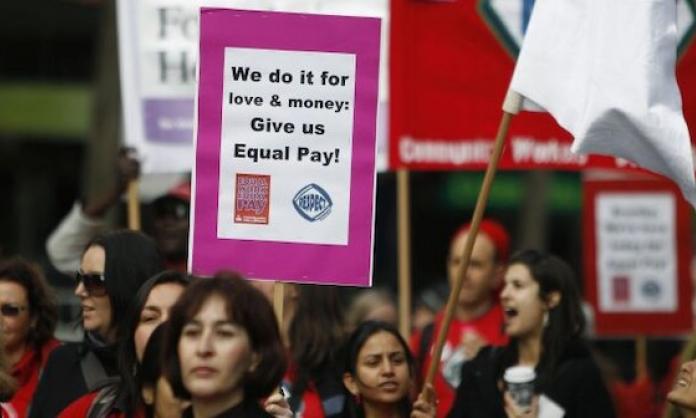Australia Post has been in the news. The drama regarding the demise of CEO Christine Holgate recently was the subject of a Four Corners investigation, “Post mortem: the story behind the turmoil that’s engulfed Australia Post”, which revealed some interesting and relevant details. But the bigger picture of what has happened to Australia Post was submerged under a discussion about the dress she wore to a recent Senate inquiry.
I work for Australia Post. My name can’t be revealed because company policy would result in immediate dismissal. But I can give some insight into what has happened and what might be in store for this national institution—and for the tens of thousands of workers who, like me, rely on it to make a living (not to mention the people who rely on the mail being delivered in good time).
When I started work at Australia Post, I spent most of my time delivering tray after tray of letters that had been sorted by hand. Then there would be the “plastics”—wrapped magazines that arrived in giant steel cages. Then, towards the end of the night, just as us posties arrived to start work, there would be a modest quantity of parcels to sort and deliver. All this changed, partially due to new technology and partially due to the internet.
First, management brought in machines to sort most of the ordinary letters. Now, posties get trays of letters that are not only sorted to our delivery rounds but “sequenced”, which means they are placed in the trays in the order they need to be delivered house by house. Only letters of an unusual shape, or with bad handwriting, now need to be sorted by humans. “Plastics” and large letters (A4 and above) are also pre-sorted into each postie’s round, though not sequenced.
Second, because of the use of email and other messaging services, the volume of letters has dropped dramatically. However, as the internet taketh away, so the internet giveth. Mainly due to online shopping, the volume of parcels has gone through the roof. Now the night sorters spend about 90 percent of their time sorting parcels.
During the lockdown last year, the wheels fell off. The volume of parcel mail increased across Australia by nearly 200 percent. In my facility, we ran out of space to store the parcels that couldn’t be sorted, and which couldn’t be delivered even if we worked a 24-hour shift.
Under the management of Ahmed Fahour, Christine Holgate’s predecessor, there was already a neoliberal agenda, which was revealed (a bit) in the Four Corners documentary when it talked about the culture of excessive remuneration for executives. What it didn’t talk about was the other end of the spectrum.
Two tiers of posties have been established. There are the “normal” posties, and there are the “contractors”. The latter are employed on a basis so dodgy that one Victorian delivery centre was visited a few years ago by Federal Police, who lined up the contractors and checked all their visas, leading to about a third losing their jobs and the arrest of the head contractor who employed them. So here we were with a Muslim CEO and workers from the subcontinent—Muslim, Hindu and Sikh—being persecuted under his watch and to his advantage.
Another feature was the establishment of StarTrack—which was covered to some extent in Four Corners. We who worked at Australia Post all knew what this was about, even though it manifests today only in a different colour scheme on certain parcels and vans. The agenda was to separate the “old mail” from the parcels, with an eye to privatising the parcel delivery business. We were told by management that we were making a big loss, based on the mail figures, which justified cutbacks, despite parcel delivery being a booming area. Of course, it was all creative accounting: separate the booming sector from the collapsing sector to paint a picture of doom that justified cutbacks.
Then Fahour left to work for a private competitor and Holgate came in. Initially, the signs were good. Talk of getting rid of night sorters died away, for instance. But the first sign of management stupidity (which always accompanies an obsession with the bottom line) came early in the pandemic, when my boss revealed that the management consensus, based on overseas experience, was that the pandemic would lead to a catastrophic collapse in mail volumes. We were then told that all overtime would be banned. One week later, the steel cages full of parcels began to clog up the loading dock, and I worked overtime for two hours every day for six months.
We then get to the nasty stuff. Holgate, for all of her “suffragist” white dress, and the fact that she ultimately stepped back from the full nastiness of Fahour’s regime, is not a hero for us posties. Her biggest legacy, from which she has distanced herself in interviews, but in which she was up to her suffragist eyebrows, was the new delivery model, whereby mail is delivered only every second day.
The justification was that posties, being freed from constant letter deliveries, could instead deliver parcels by van. This was accompanied by a recruitment freeze. But the high staff turnover meant a significant reduction in full-time workers, which has been made up for by new “contract” staff, who increasingly work directly out of the parcel centres. The result? Every postie now has two rounds instead of one, with a handful delivering parcels by van.
Holgate also sucked up to Pauline Hanson to obtain her vote to enable the new delivery model. (Because the government doesn’t control the Senate, Hanson’s vote was critical to pass legislation to allow Australia Post to deliver mail only every second day.) That’s why Holgate threatened the Melbourne City Council when it tried to stop the delivery of Pauline Hanson stubby holders to the multicultural inhabitants of housing blocks in Melbourne’s north. She also gave Hanson a VIP tour of a new Australia Post facility in Queensland.
Of course, that wasn’t why Christine Holgate was sacked. She was sacked because she was expendable—and it probably helped that she was a woman. But there are many female posties who are now more vulnerable, who face increased workloads, who are forced into casual work and who risk injury to meet their targets.
So the neoliberal model is in place: reduce and demoralise the workforce, then use the alleged failures of demoralised staff to justify privatisation. Next time you expect a parcel and it doesn’t come, be angry. But don’t blame the postie!








